2-1: my former (past) works
While my final project is for making "Natural" Plants move and walk, I am also interested in "Artificial" Plants-like Object. (I don't know why but in general Architects are interested in plants. In my opinion, there are some commonalities between architecture(buildings) and plants...)
LAST YEAR, I made "L-system-based Fractral Tree" in FabLabJapan(Beta). "L-system-based Fractral Tree" in FabLabJapan(Beta),Keio SFC, Tanaka-lab project details-link


This project was exhibited at SFC ORF 2009 and ICC (NTT Intercommunication Center) in 2010. After that, one set of pieces were exported to Congo (by one of my students, Tomotaka Tajimi), and another set of pieces are planned to install in Boston Children's Museum in 2011.
2-2: Design Code, Design Tools
For this project, my students and I implemented two design softwares-
The one is called "Modular Designer" and the other is "(L-system) Assembly Simulator"
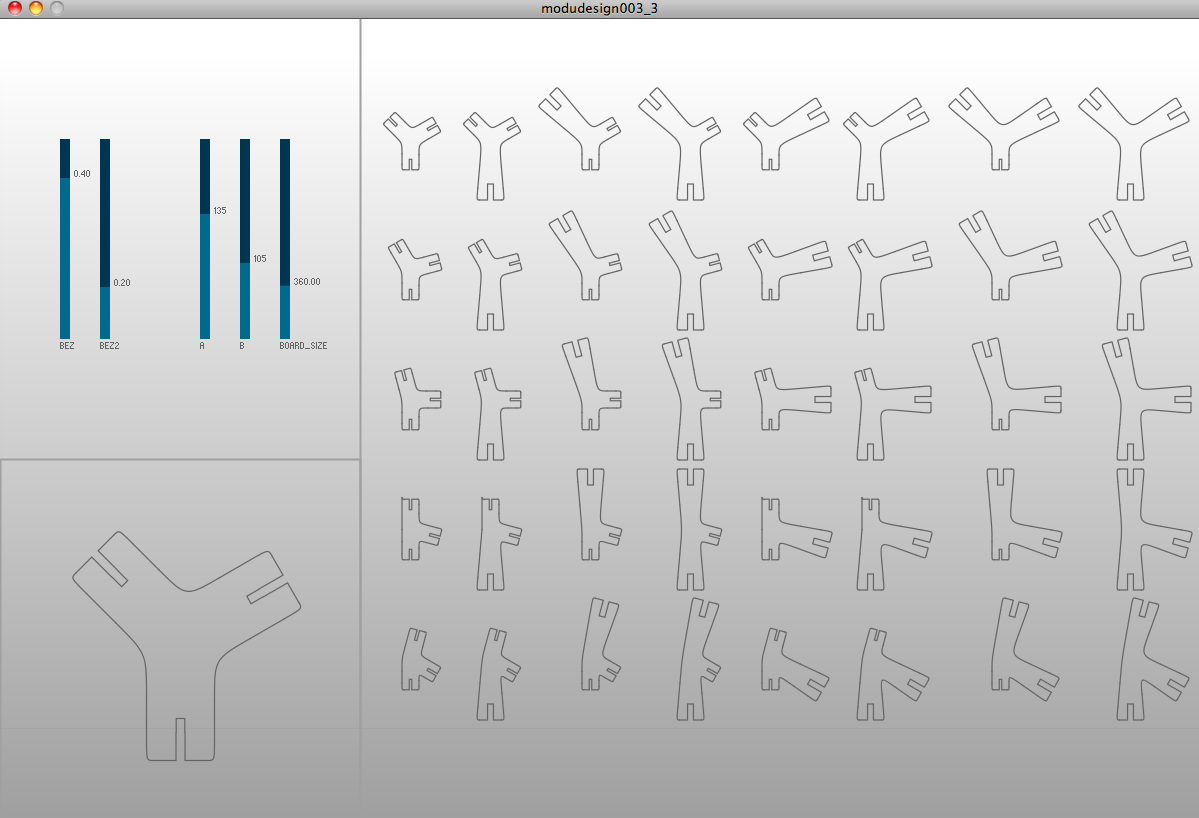
"Modular Designer" (by using Processing)
Java Applet called "modudesign" - sliders, creating PDF file
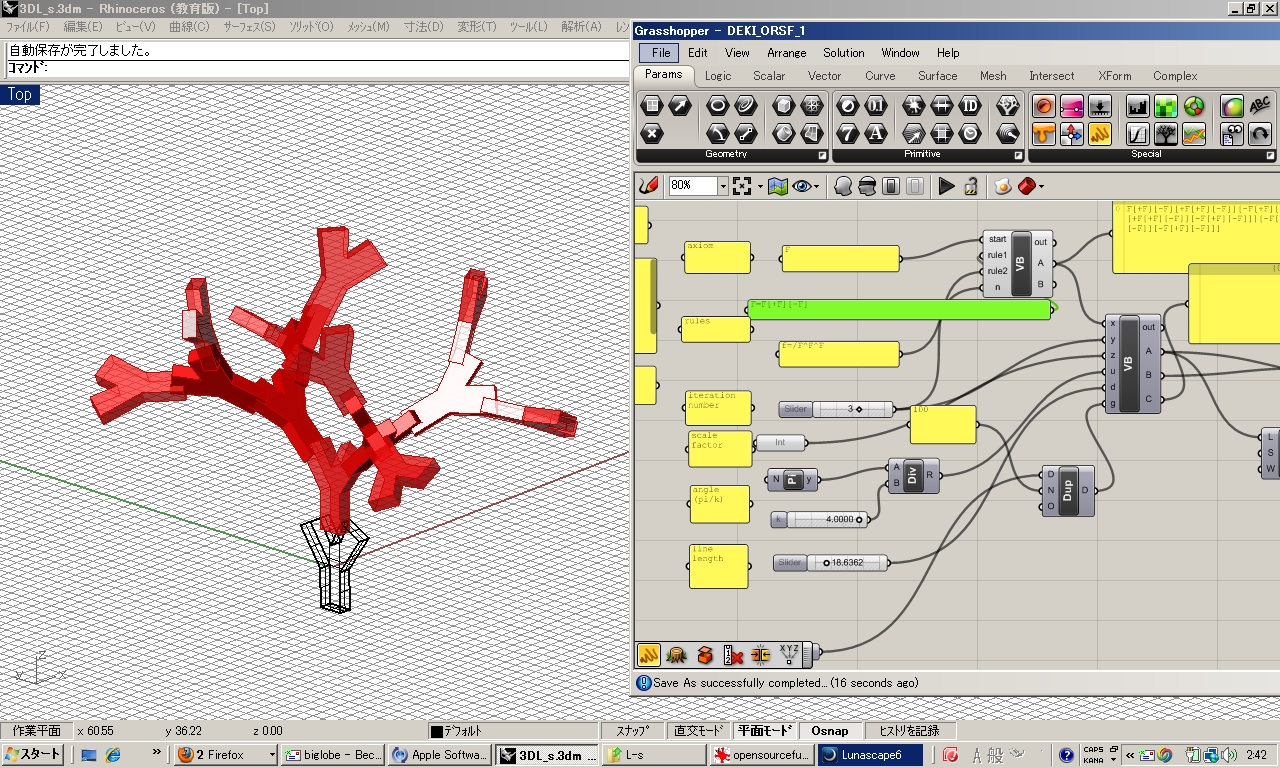


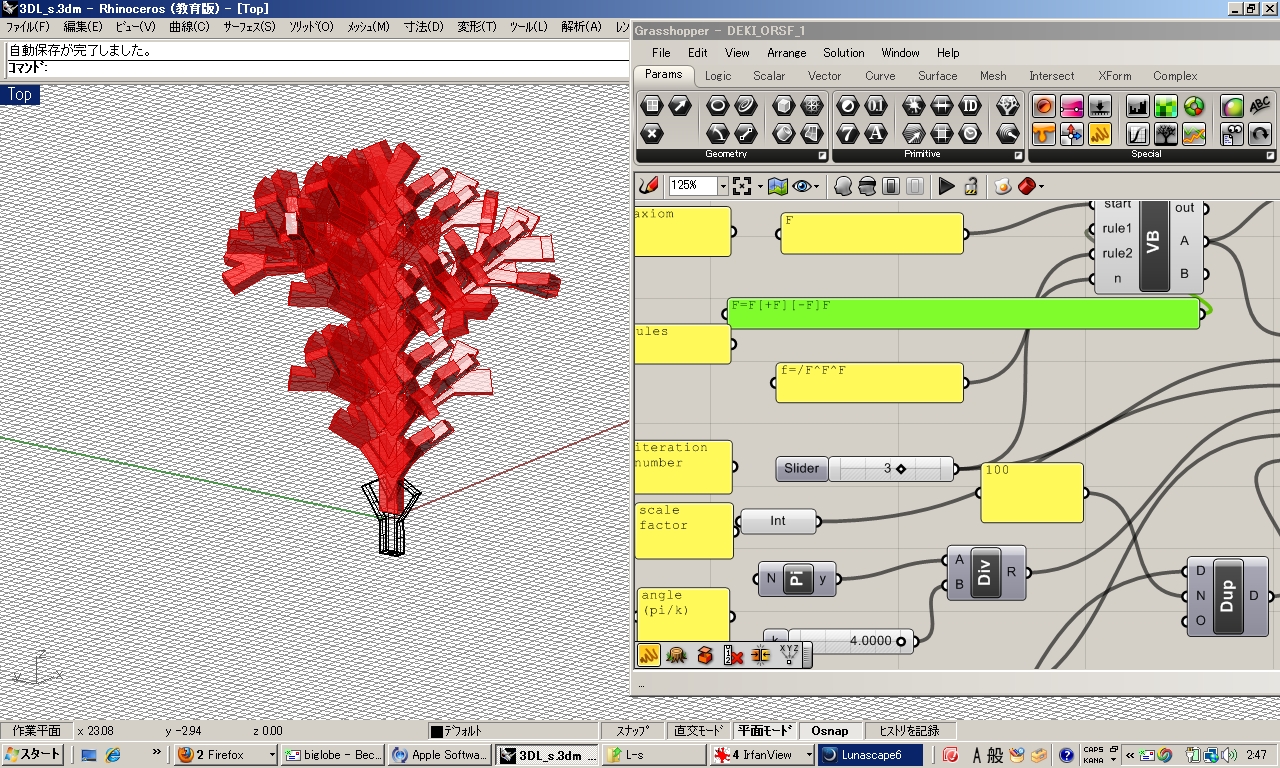
"(L-system) Assembly Simulator" (by using Grasshopper)
Grasshopper XML ORSF_grasshopper (this script was folked from Milana Dabic's "3D-Lsystems" (http://www.grasshopper3d.com/profiles/blogs/3d-lsystems))
Rhino Moduler Sample branch shape Module(.3dm)
Rhino Moduler Sample triangle shape Module(.3dm)
2-3: Construction Kit Part I
When we set a triangle as a basic module, the result is here
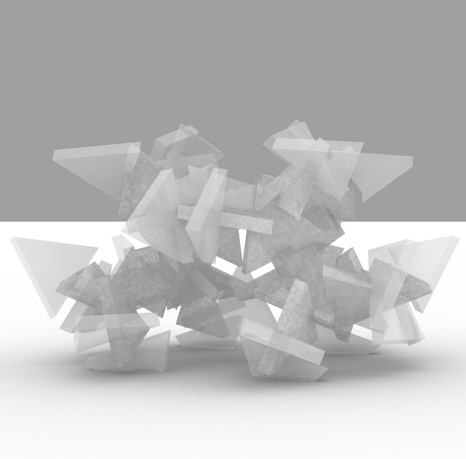

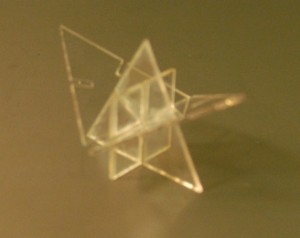
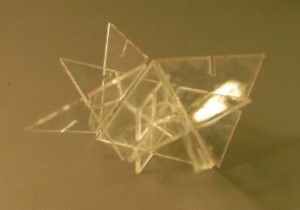
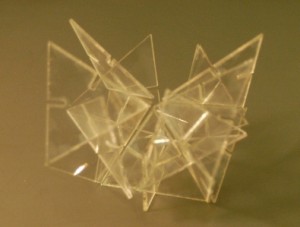
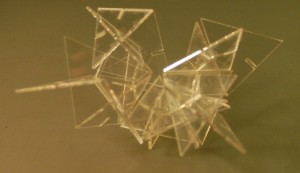

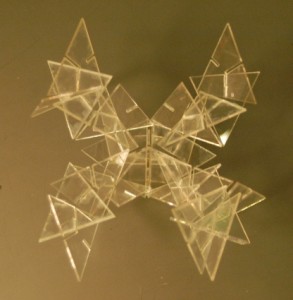

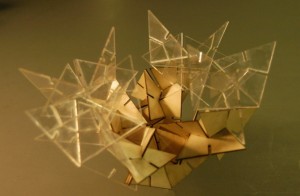
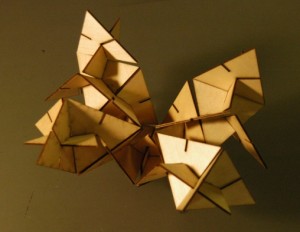
It's interesting.... only by using regular polygon (triangle), we can construct "Open-End" geometries....
I think it is the opposite direction to make "Polyhedra" (Closed- Perfect geometries).
2-4: Construction Kit Part II
By the way,last week Neil introduced "GIK" kits (from Wikipedia).
I was really impressed and inspired from that.
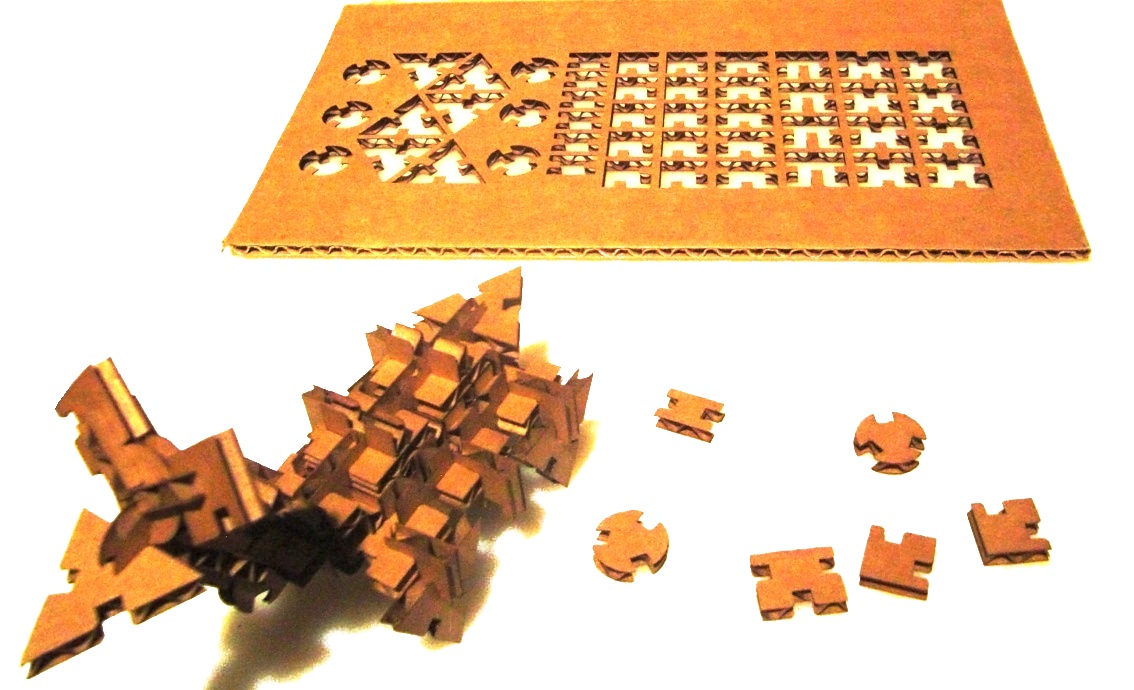
After that, I started to think about how we can intergrate GIK Modular System and Fractal-Tree Modular System.
I am going to describe how to reach "Fractal GIK".
(a) I don't know "the official" set of GIK kits though.....
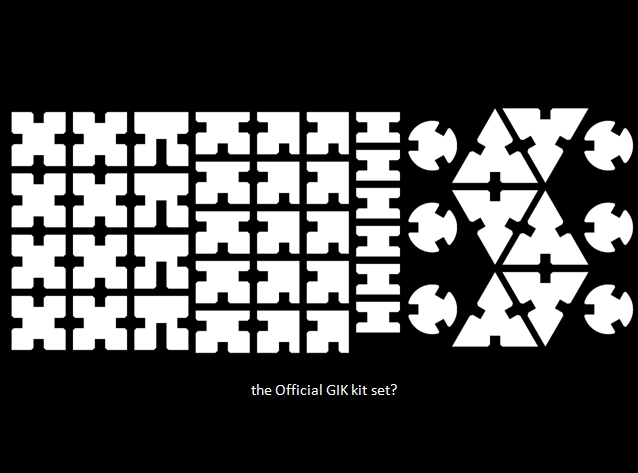
(b) I think three parts can be aggregated to one part.
So we have 4-basic parts here.
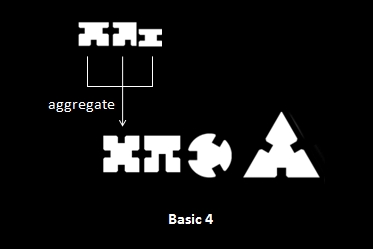
(c) I propose to add three other circular parts in order to construct polyhedra
(a tetrahedron, a cube, an octahedron, an icosahedron, except a dodecahedron since it needs a pentagon).
{3, 3} a tetrahedron 70.5°
{4, 3} a cube 90°
{3, 4} an octahedron 109.5°
{3, 5} an icosahedron 138.2°
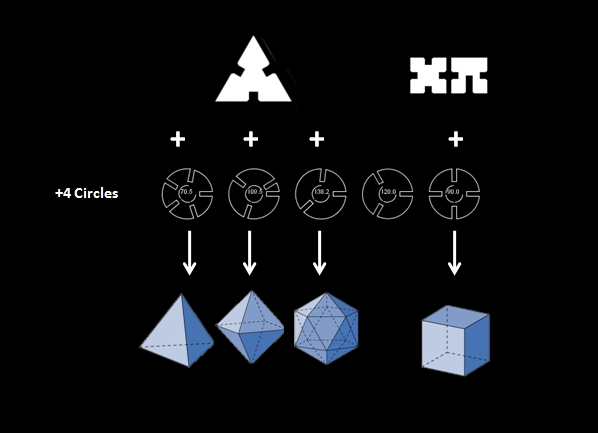
(d) Why there are two different pieces of rectangle?
The reason is that the one is for chain-connecting, the other is for construct a box.
It's a nice idea!
So I propose to apply the same idea to a triangle and a circle.

(e) Ok, I have to add a branch module.

(f) So there are standard module set.(12 pieces)


(g) In order to make Fractal-System, we have to prepare joint-system
for connecting various sizes (& thicknesses) of pieces.
Here are complete module set of "Fractak GIK".
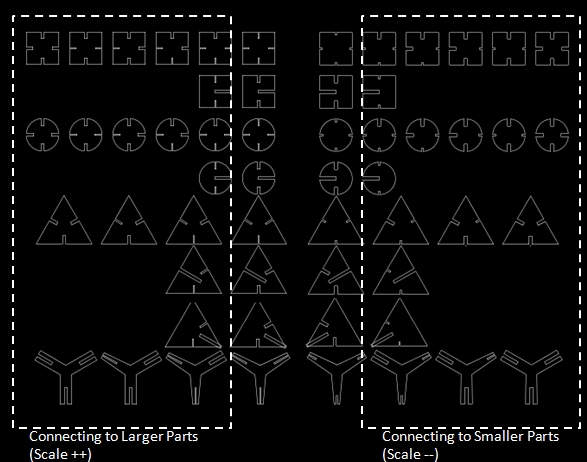
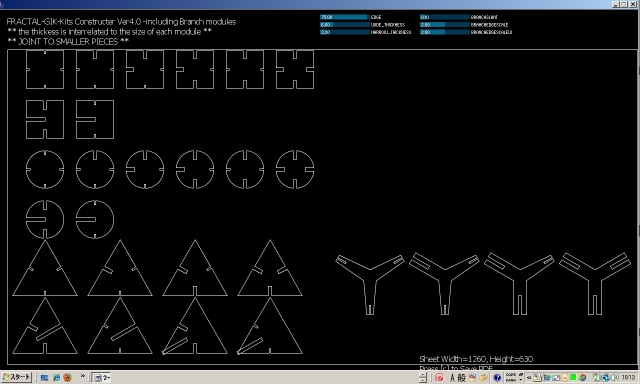
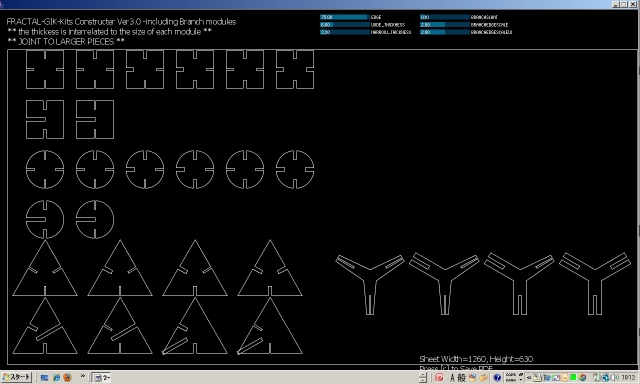

I implemeted design tool quickly.
"Fractal GIK Designer" (by using Processing) Java Applets
fractalGIK_joint2smallerParts
fractalGIK_joint2largerParts
fractalGIK_CircularJoints
2-5: Size and Thickness Study on my sketchbook
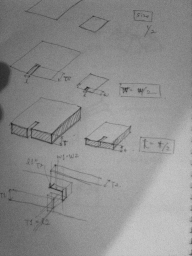

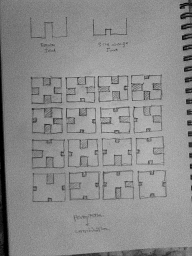
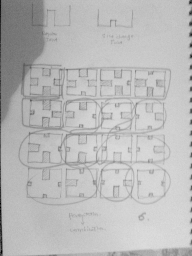
In order to connect different-scale and different-thickness parts,
we have to think about joint-system.
w1=w2
l1=t2
t1=l2
I calculated the possible permutation and combination, paying attention that it is reversible.
2-6: Here is a final data for cutting.


sheet1( .ai format) - 24*12inch, 1/8thickness
sheet1( .3dm format) - 24*12inch, 1/8thickness
sheet1( .dxf format) - 24*12inch, 1/8thickness
sheet2( .ai format) - 24*12inch. 1/8thickness
sheet2( .3dm format) - 24*12inch. 1/8thickness
sheet2( .dxf format) - 24*12inch. 1/8thickness
2-7: Material Study
Clear Acryl, White Acryl, Cardboard, Plywood
2-8: Fabrication - Assembly (on going)
To do
-to investigate 1/4 and 1/2 materials -"H" module -crystal tree